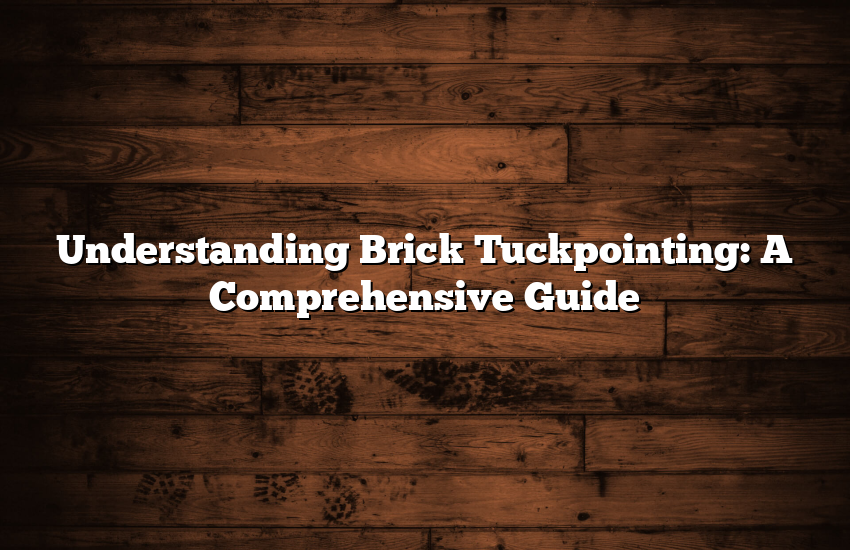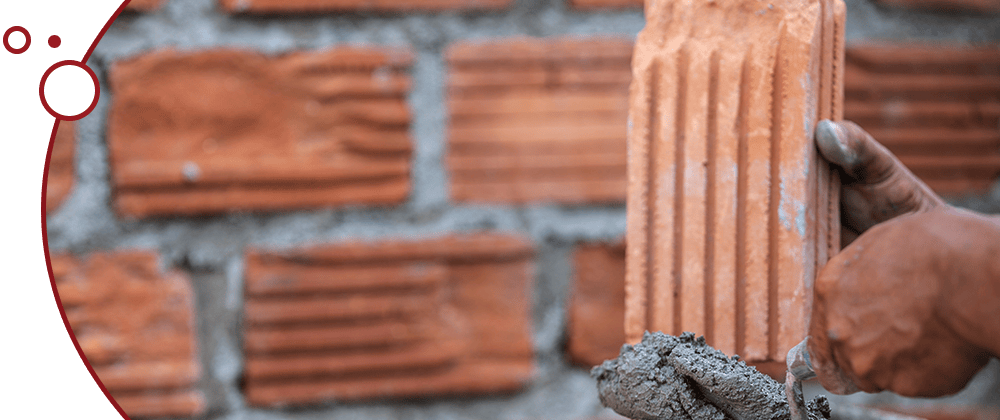
What is brick tuckpointing? This question is fundamental for homeowners looking to maintain or restore the aesthetic and structural integrity of their brickwork. Tuckpointing, a critical aspect of brickwork maintenance, involves the renewal of mortar joints in brick masonry. This guide delves deep into the intricacies of tuckpointing, illustrating its importance, methods, benefits, and more.
Table of Contents
Understanding the Basics of Brick Tuckpointing
History and Evolution
Tuckpointing, originating in the 18th century, has evolved significantly. Originally a technique to imitate high-end rubbed brick, it is now a standard in masonry maintenance.
Identifying the Need for Tuckpointing
Recognizing deteriorating mortar joints is crucial. Look for signs like crumbling mortar, cracks, or gaps in the mortar.
The Tuckpointing Process
Step-by-Step Guide
- Mortar Removal: Careful removal of old mortar to a specific depth.
- Mortar Preparation: Mixing new mortar to match the existing color and texture.
- Filling Joints: Apply the mortar neatly into the joints.
- Finishing Touches: Striking or shaping the mortar for a uniform look.
Tools and Materials
Understanding the tools (trowels, jointers, etc.) and materials (mortar types) is crucial for effective tuckpointing.
Benefits of Tuckpointing
Structural Integrity
Tuckpointing strengthens and stabilizes brickwork, preventing structural issues.
Aesthetic Appeal
Restoring the original appearance of brickwork enhances a building’s visual appeal.
Value Addition
Well-maintained brickwork can increase property value and appeal to potential buyers.
DIY vs. Professional Tuckpointing
When to DIY
Small, accessible areas with minor issues can be a DIY project.
When to Call Professionals
Large-scale or complex projects require professional expertise for safety and quality.
Common Mistakes to Avoid in Tuckpointing
Inconsistent Mortar
Using the wrong type or color of mortar can lead to inconsistent aesthetics and durability issues.
Overworking the Mortar
Avoid overworking the mortar, as it can lead to poor adhesion and longevity.
Maintenance Tips After Tuckpointing
Regular Inspections
Conduct yearly inspections to catch any early signs of deterioration.
Cleaning and Sealing
Periodic cleaning and sealing can prolong the life of tuckpointed joints.
Conclusion
Brick tuckpointing is a vital maintenance aspect for any brick structure. Understanding what is brick tuckpointing and implementing it effectively ensures the longevity and beauty of your home’s brickwork. By following this guide, homeowners can make informed decisions about preserving their brick structures for years to come.
FAQs
Q: How often should tuckpointing be done?
A: Tuckpointing typically lasts 20-30 years, but it depends on environmental factors and the brickwork’s condition.
Q: Can I match the new mortar to my old brickwork?
A: Yes, professionals can mix mortar to closely match the existing one in color and texture.
Q: Is tuckpointing expensive?
A: The cost varies based on the project’s scale, location, and complexity.
Q: Can tuckpointing be done in any weather?
A: Ideal conditions are dry and mild temperatures; extreme weather can affect the mortar setting.
Q: What’s the difference between tuckpointing and repointing?
A: Repointing involves only the renewal of mortar joints, while tuckpointing includes adding aesthetic finishing lines in the mortar.


